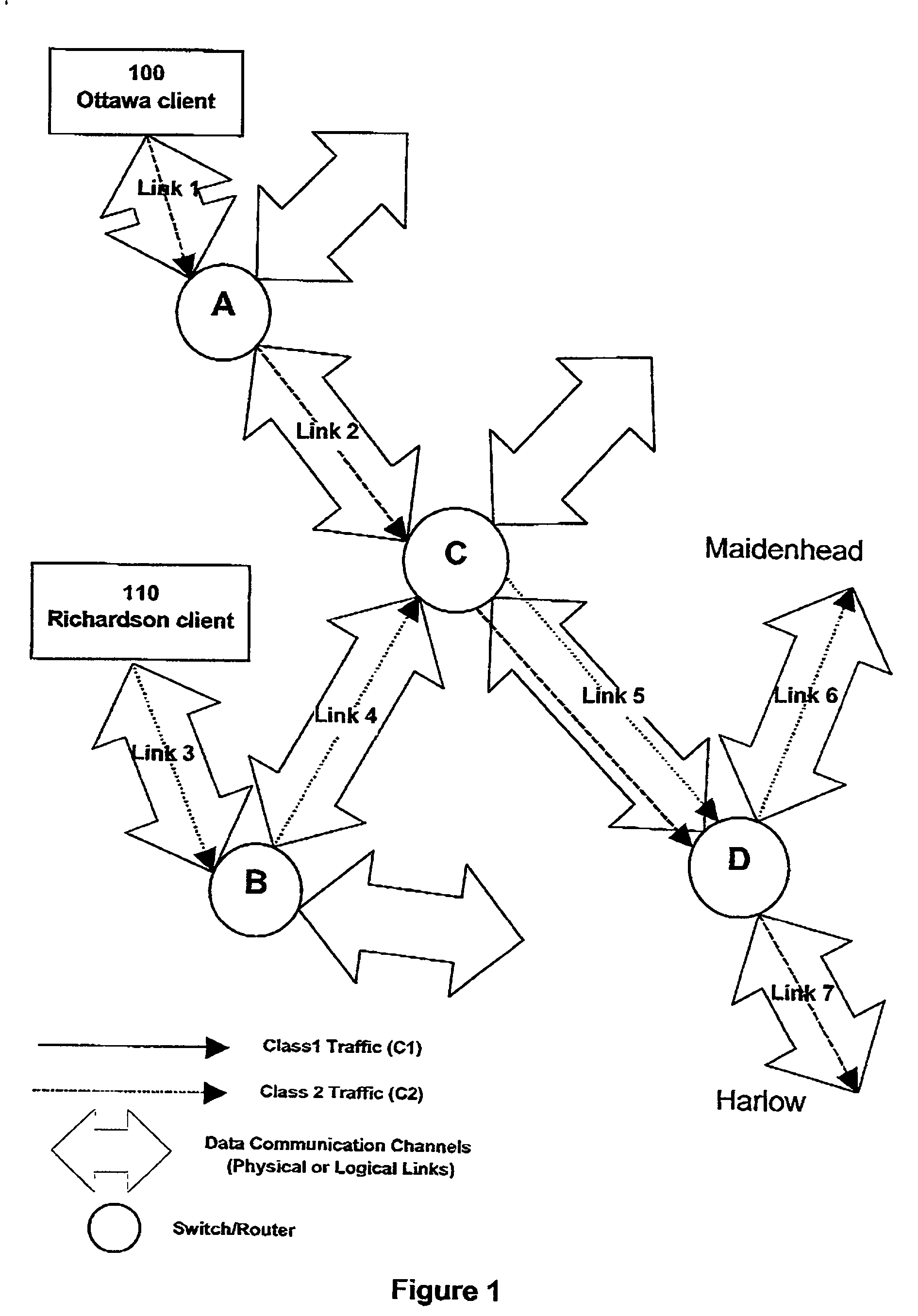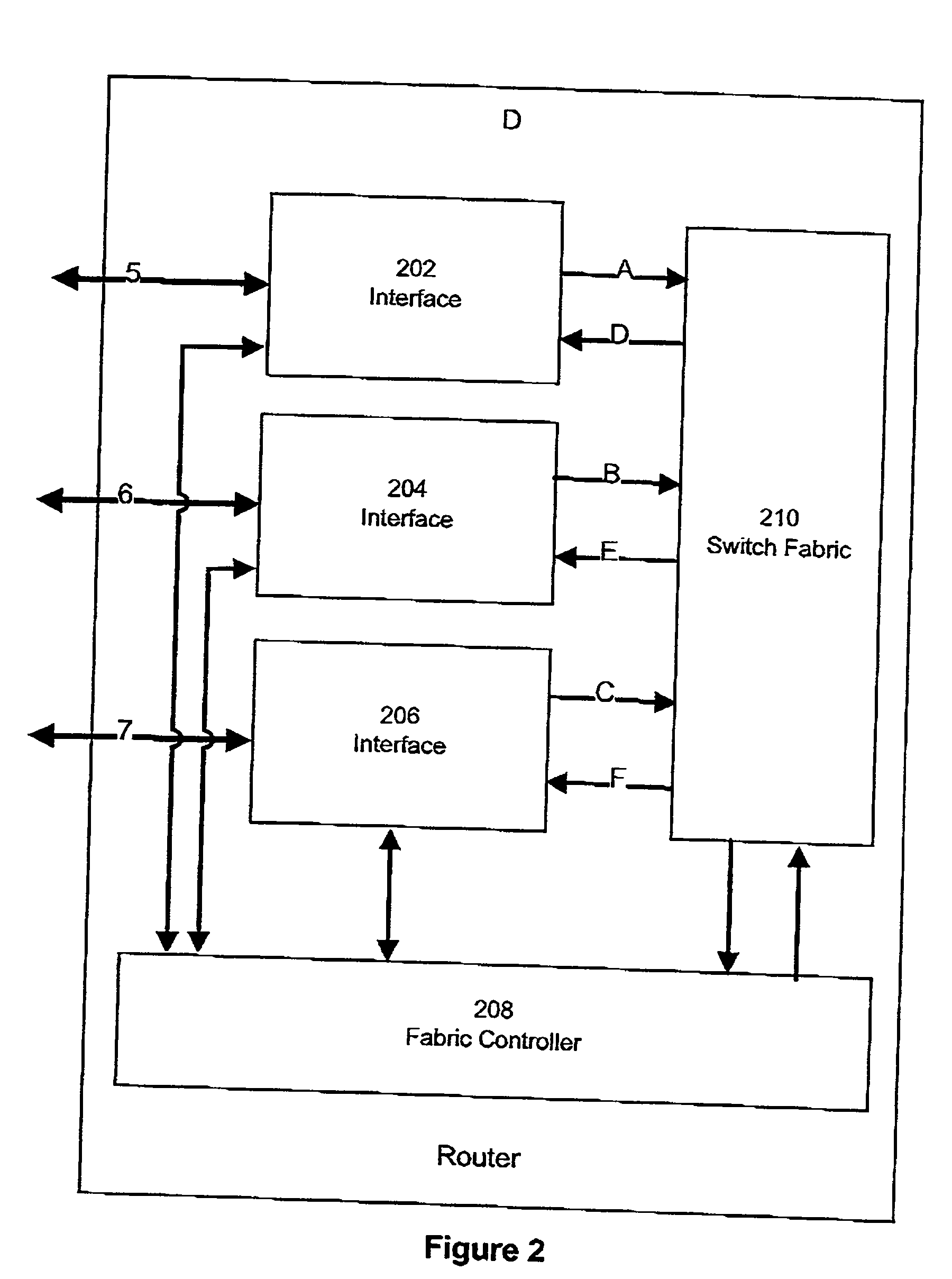Method and apparatus for simple ip-layer bandwidth allocation using ingress control of egress bandwidth
a technology of ingress control and ip-layer, applied in data switching networks, instruments, frequency-division multiplexes, etc., can solve problems such as inability to economically sound, transfer rates, and further complicated output buffer models, and achieve the effect of limiting the possibility of congestion
- Summary
- Abstract
- Description
- Claims
- Application Information
AI Technical Summary
Benefits of technology
Problems solved by technology
Method used
Image
Examples
Embodiment Construction
[0091] FIG. 1 illustrates an example of a situation where two different classes of traffic travel through a data communications network that has adopted the Internet Protocol (IP) for its internetwork procedures. The two different classes of traffic present are C1 and C2. For a given logical egress port, C1 traffic is always able to use up the reserved amount of allocated bandwidth if it has traffic to send; however, this class is never allowed to use more than the reserved amount even if there is bandwidth available. As to the C2 class, for a given logical egress port, C2 traffic is always able to use up the reserved amount of bandwidth if it has traffic to send; however, if it has more traffic to send it can compete equally with other permitted classes for any available bandwidth, up to a certain maximum amount. In the case of FIG. 1, an Ottawa client 100 is sending traffic of class C1 (reserved bandwidth without overflow) to Harlow, whereas a Richardson client 110 is sending traf...
PUM
 Login to View More
Login to View More Abstract
Description
Claims
Application Information
 Login to View More
Login to View More - R&D
- Intellectual Property
- Life Sciences
- Materials
- Tech Scout
- Unparalleled Data Quality
- Higher Quality Content
- 60% Fewer Hallucinations
Browse by: Latest US Patents, China's latest patents, Technical Efficacy Thesaurus, Application Domain, Technology Topic, Popular Technical Reports.
© 2025 PatSnap. All rights reserved.Legal|Privacy policy|Modern Slavery Act Transparency Statement|Sitemap|About US| Contact US: help@patsnap.com



